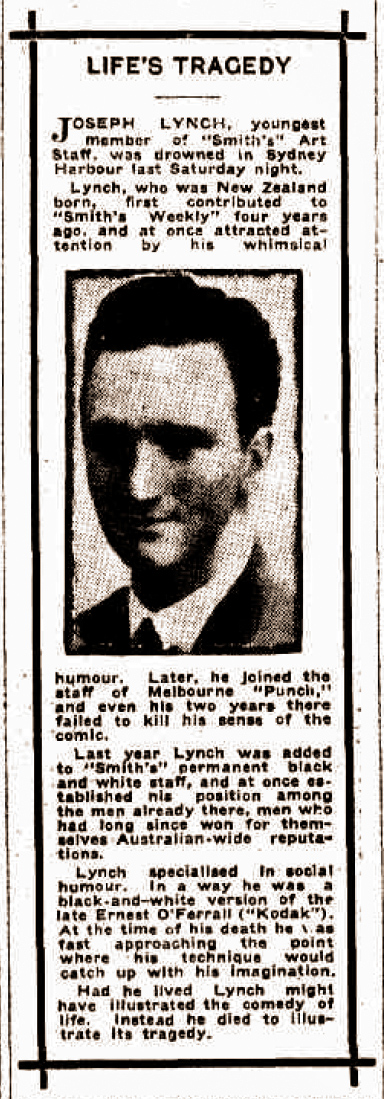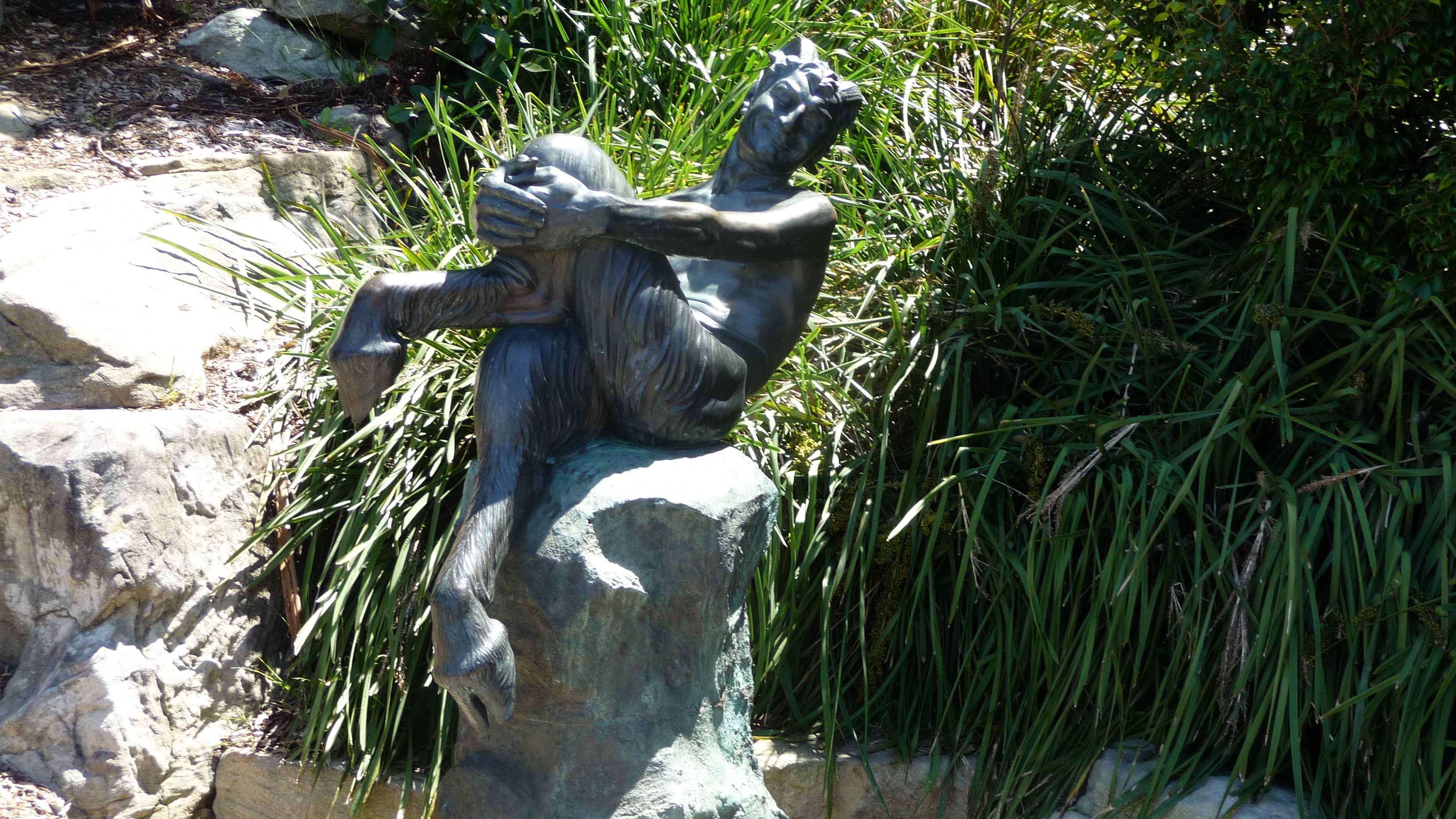The Dictionary of Sydney was archived in 2021.
The Satyr and Five Bells
 Life's Tragedy: announcement of Joe Lynch's death in Smith's Weekly, 21 May 1927, via Trove
Life's Tragedy: announcement of Joe Lynch's death in Smith's Weekly, 21 May 1927, via Trove
Listen to the audio of Minna and Tess on 2SER here
Deep and dissolving verticals of light Ferry the falls of moonshine down. Five bells Coldly rung out in a machine's voice. Night and water Pour to one rip of darkness, the Harbour floats In air, the Cross hangs upside-down in water.
from Five Bells, Kenneth Slessor, 1939
As you walk along the edge of the Royal Botanical Gardens near the Man O’War steps you might stumble upon The Satyr. A small bronze statue with big hairy goat legs and the torso of a man with a very cheeky smile on his face. Eyes half shut, he leans back on his podium like he’s just told a joke. Originally it was sculpted in plaster by Guy Lynch and exhibited in 1924 in the Young Australian Artists’ exhibition in the Anthony Hordern and Sons Fine Art Gallery. To get the correct proportions, Guy tied up a goat in his backyard and then got his brother Joe Lynch to model for the torso. Reviews of the work at the time veered between 'magnificent' and 'remarkable' to 'insolent, vicious and animal to the last degree'. Joe and Guy were fixtures of the 1920s bohemian scene in Sydney, carousing with artists and journalists. Joe worked at the popular newspaper Smith’s Weekly as a black and white cartoonist with colleagues like the poet Kenneth Slessor who later described Joe’s wild personality as prone to mad Irish humour and mad Irish rages, a ‘devout nihilist [who] frequently over a pint of Victoria Bitter said the only remedy to the world’s disease was to blow it up an start afresh’ (Daily Telegraph, 31 July 1967). Most Saturday nights they would all head to their friend George Finey’s apartment in Mosman to party. On Saturday, 14 May 1927, Joe finished work at Smith’s, put on his old overcoat and walked down to Circular Quay to meet the crew, including Guy. The harbour bridge was still being built and people would often gather at the pubs nearby to wait for the ferry to take them across to the other side. They got on the 7.45pm ferry, carrying drinks on board - Joe loading up his overcoat pockets with bottles of beer. Because there were not enough seats, Joe was leaning against the rail on the outside deck. Suddenly as they passed Fort Denison, he disappeared over the side and into the black water. His body was never recovered. For most Sydneysiders at the time, Joe’s drowning was unremarkable, but for Guy, things were never the same. He ‘went to pieces’ and took to pacing the harbour foreshore in front of the Royal Botanic Gardens, looking out to the water as if looking for his brother. The Satyr, Royal Botanic Gardens 2014, courtesy Lindsay Foyle
The Satyr, Royal Botanic Gardens 2014, courtesy Lindsay Foyle
Categories
Blog
1920s
2ser
art
black & white artist
brothers
cartoonist
family
Five Bells
Frank Lynch
Guy Lynch
Joe Lynch
Kenneth Slessor
Kiandra
Minna Muhlen Schulte
poetry
Satyr
sculpture
Smith's Weekly
Sydney Harbour
sydney history
Tess Connery

